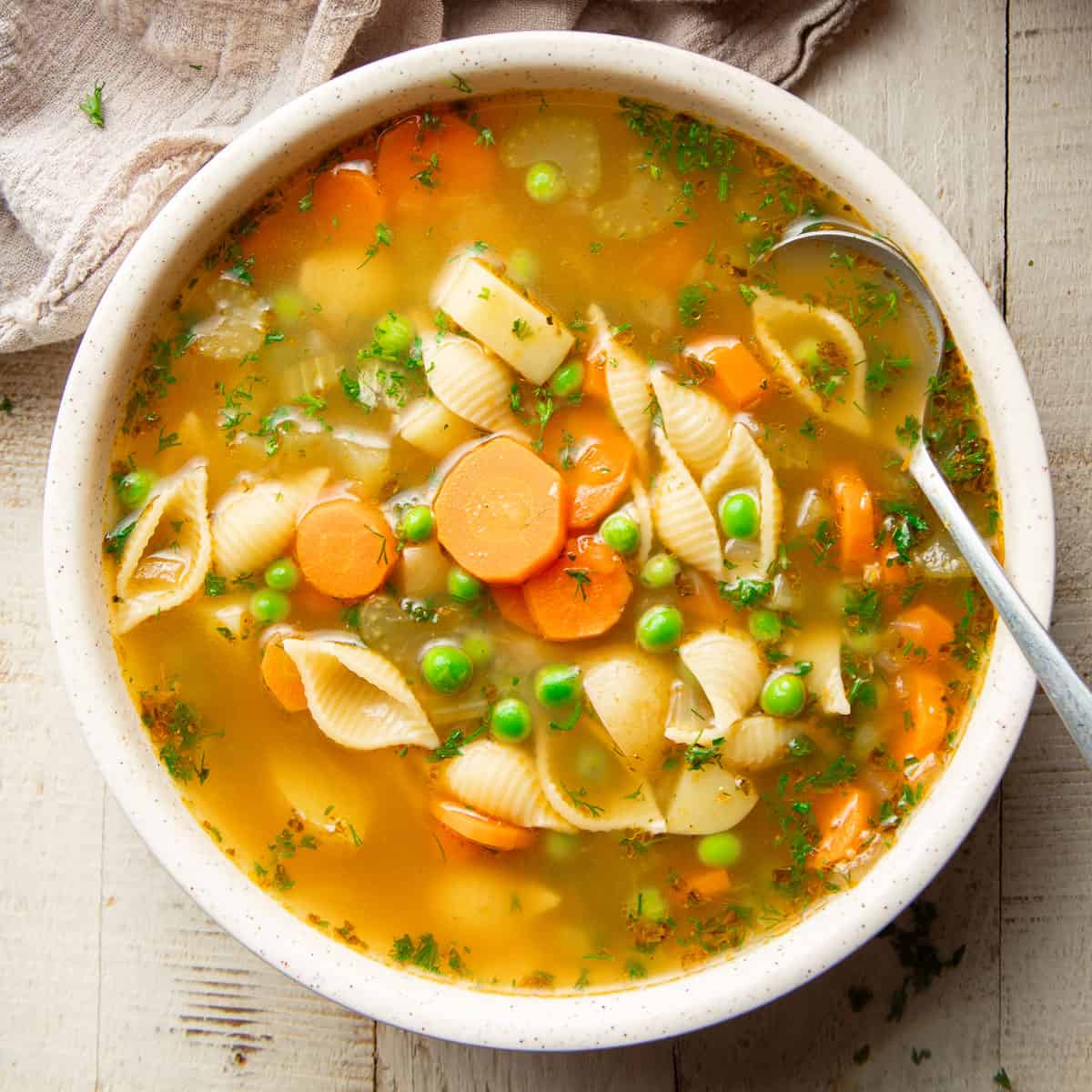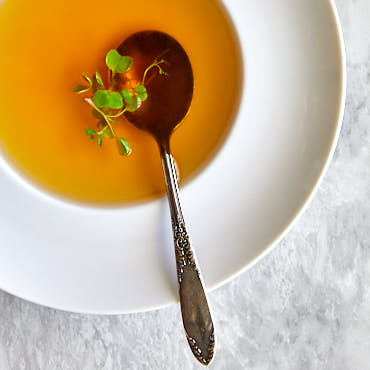@Charlaquin @Whizbang Dustyboots
I think the thickening of a stew is the most important thing. Sometimes that's done by cooking until the liquid partially evaporates and has "Stewed Down" like in stewed tomatoes.
However, it's also done by adding thickeners like Corn Starch, Toasted Flour, or tempered Eggs or Egg Yolk.
But that -also- doesn't work... because there's Cream soups. They're thick, luscious, and delectable on a cold day, just as much as any stew!
There's also the size and quantity of the ingredients to consider. In a soup, you typically have a fairly large amount of liquid relative to the soup's contents. Here's a very full veggie soup compared to a beef stew.
If you stirred that with a spoon, there's plenty of liquid for the veggies and noodles to move around or be submerged in.
Contrast with the Beef Stew, which is practically potatoes, carrots, and beef with some tomato gravy.
And then compare both with a Consomme...
Which is defined as a clear soup. Of which there are many.
Now... if we approach this, instead, through etymology, there might be a more reasonable answer. "Stew" comes from the Greek Tuphos, meaning smoked or steamed. Which is to say:
When you cook a soup you keep the lid on as much as possible in order to maintain the liquid balance to the ingredients to ensure the flavor is the same.
When you cook a stew, you often crack the lid or even take it off entirely, 'Steaming' your house, as you reduce the liquid content to increase the density of the flavor relative to the quantity of liquid.
Thus, the -process- of thickening the stew is what makes it stewed, rather than the final result being homogenous across multiple dishes each labeled "Stew": Taking the lid off or otherwise letting the steam out to intensify the flavor of what is left behind.



